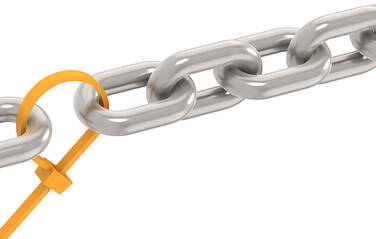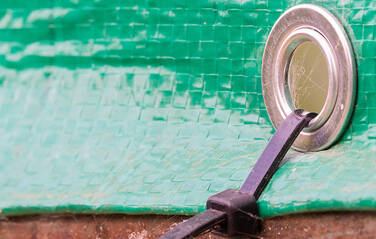Banners and signage are hung and displayed for a variety of reasons. Here, we look at how to attach them safely and securely.
What are banners and signs used for?
Banners are primarily used as advertising, for example for a forthcoming event or sale, to make announcements such as ‘We are hiring’, to provide directions, and to show appreciation or to celebrate an occasion. Usually made from a strip of a variety of materials, banners will bear the logo or name of the relevant company or organisation, or event.
Types of banner materials
Banners are generally made from fabric, vinyl or mesh.
Fabric banners – these are the perfect solution to indoor banner requirements and, usually being polyester, they are machine-washable and crease resistant.
Vinyl banners – durable, vinyl banners are perfect for all situations and are suitable for indoor and outdoor use. Vinyl banners are quite heavy and will require more than one person to lift and install a bigger-sized piece.
Mesh banners – the open-weave construction of a mesh banner makes it ideal for outdoor situations that are exposed, or that are vulnerable to high winds.
Banner styles
There are many styles of banner including wall mounted banners, pole banners, pull-up and retractable banners, and feather banners.
The advantages and benefits of using banners
Without doubt a great way to attract attention, banners are a cost effective method of advertising and an effective way to increase your client base. Banners can also be used multiple times and are ideal for outdoor use.
How to install a banner
Outdoor banners need to be installed securely enough to withstand weather conditions like harsh winds and heavy rain, while all banners should be installed appropriately for maximum lifespan and audience exposure.
Attaching a banner to a chain-link fence or to railings
Vinyl banners will generally feature a hemmed edge and evenly spaced eyelets reinforced with metal grommets. The hem gives the banner extra thickness for added strength and will reduce the risk of fraying or curling edges. The most efficient way to attach this kind of banner is with nylon cable ties, using one through each eyelet – this will give maximum support for the weight of the banner and will facilitate it being hung straight and without any sagging. Our nylon 6/6 cable ties have high tensile strength allowing them to weight-bear the heaviest of banners and are suitable for long term use. However, they are easy to remove by cutting them when needed. For external banners, we recommend our UV stabilised cable ties which will withstand UV damage.
Attaching a banner to a wall or building
Attaching banners high up allows them to be seen from further away and being hung against a wall will protect the banner from the elements. If it is necessary to drill holes into the wall for screws, always get permission and look upon it as a permanent solution, rather than temporary. Reduce the size of the eyelets in the banner edge by inserting a washer over the grommet before screwing in place. For all materials including washers, screws, drill bits, screwdriver bits and wall plugs, see our signage fixings.
For help with how to hang your banners, including advice on the best fixings for the job, call us on 01623 412160 or send us an email to sales@cableties-online.co.uk








